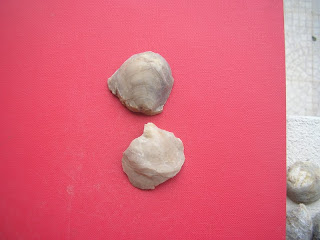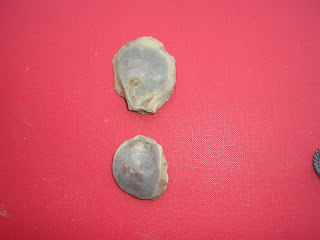nIn the world we live in, the world that surrounds us, there are innumerable fossils of marine life forms that we have not odsevved carefully. We see them scateered everywhere, even at very hight altitudes, which certainly attests that the whole earth was covered with oceans of sea water a long time ago. It seems that the water with drew or evaporated slowly and thus appeared the land as we se it roday along with the dead shells that suprisingly still exixt on mountains and alps of over 4000 meters. There are magnificent fossils causing our admiration at first glance tha most interesting of which are those which have adapted to the environment and can not easily be seen by those who are not familiar with the odject. The most impressive are wel hidden and difficult to distinguish. The findings were collected from the shoreline from the sea bottom frm slopes with different kinds of soils and argil from hillsides from primevas beaches and underwater caves and many wer trapped in large rocks. I was extremely lucky to find many as they first appeared and some intact, mainly those wich were covered by gravel or red soil. With great surprise i saw and collect a lot with the look of mould (casts) prints even in hard stones dut also in hardered red clay. But solid fosils have made tihe biggest impression on me. You can distinguish on their outer surface, even roday, their little lines. They are white, shiny and luminous. They were shaped dy undersea currents so well that they remind us of pearls. In order to find them i looked everywhere even in the most inaccessible areas in places inaccessidle and impenetrable only to meet with this unknown microcosm on the webside edited by my first son George Aspradakis you can see photographed fossils some of which do not have names. I hope with the help of all those who are interested all of almost alla will find their names although this is very difficult because mny have been dead and grinding so we do not have their whole image. For the discriptions of the fossils i have gotten information from the webside of the geological department of the university of Athens and the encyclopedias Ilios and Ppyrus Larousse
29/7/2011
Nikos Aspradakis
29/7/2011
Nikos Aspradakis









































































































